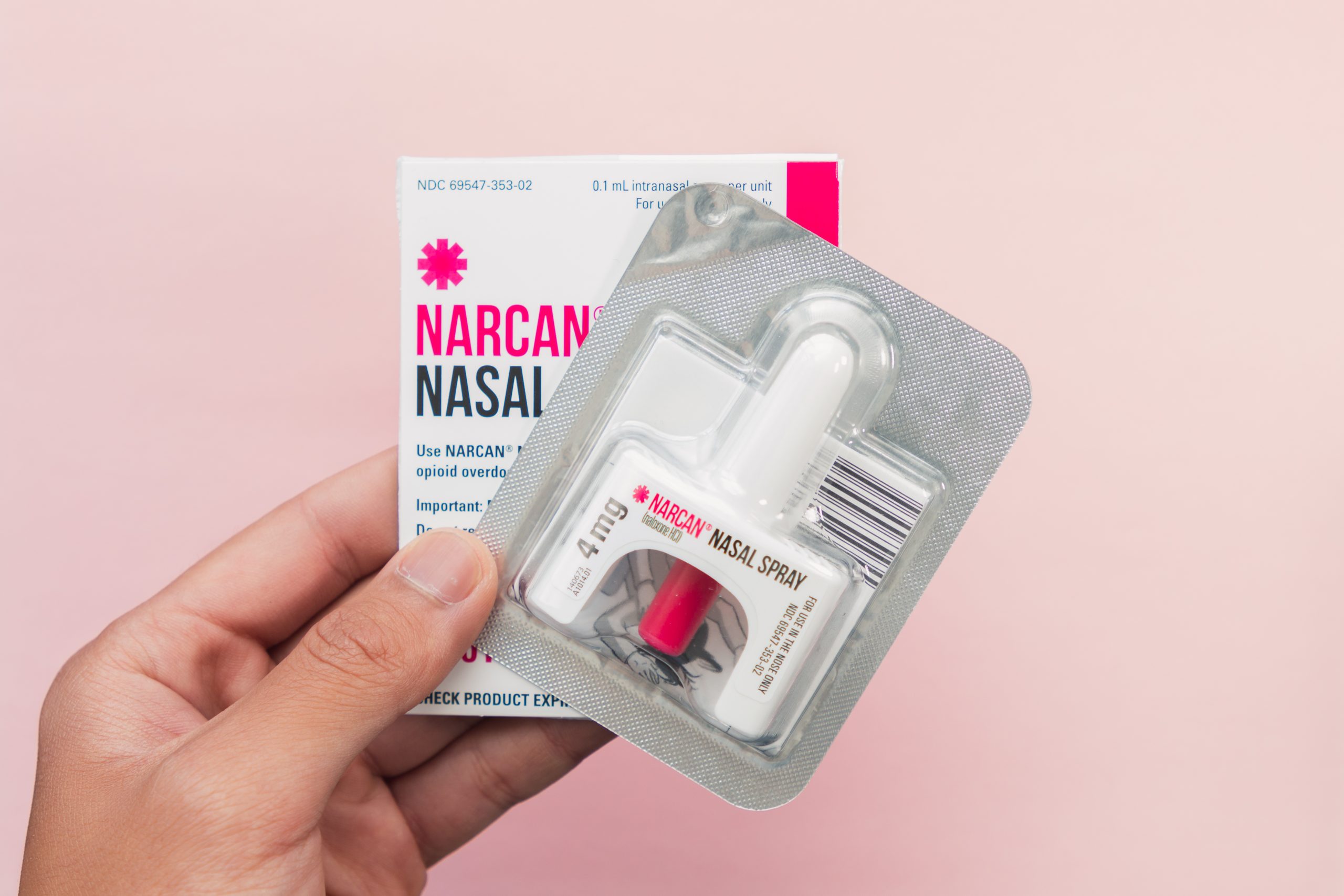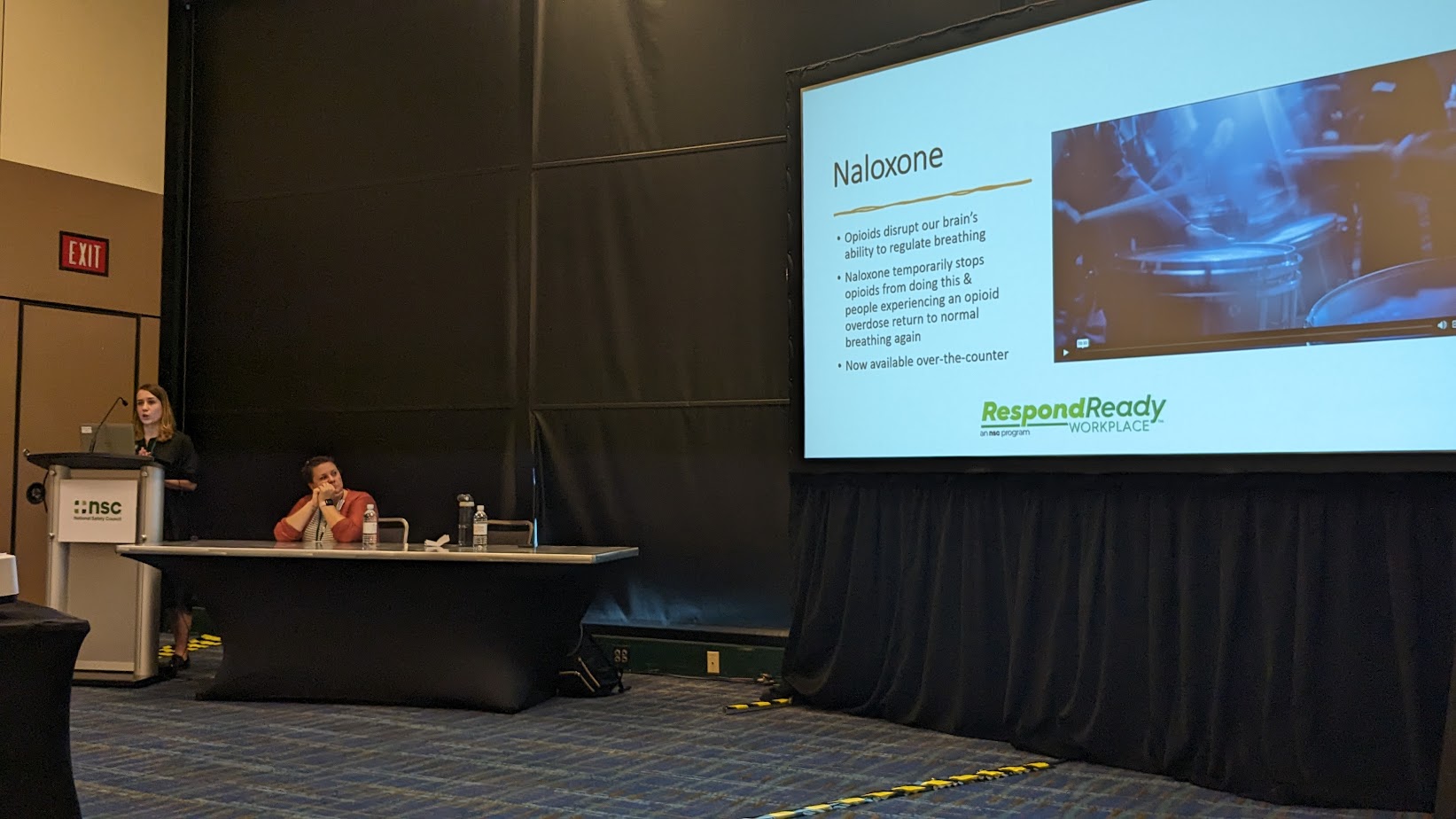
Ending the ‘vicious cycle’: NSC tackles substance abuse disorders, opioid epidemic in the workplace
October 24, 2023
By
Todd Humber

A hand holding a Narcan Evzio Naloxone nasal spray opioid drug overdose prevention medication. Photo: Adobe Stock
NEW ORLEANS — In an effort to address the burgeoning crises of mental health and substance use disorders in the American workforce, the workplace well-being team at the National Safety Council (NSC) is developing a comprehensive program aimed at fostering “Recovery Ready Workplaces.”
The initiative is grounded in alarming statistics: 17% of the U.S. population, or about 46 million people, meet the criteria for a substance use disorder. In 2022 alone, 110,000 people died from overdoses in the United States, according to a presentation at the National Safety Council’s 2023 Safety Congress & Expo by Rebecca Martin, program manager, at the National Safety Council, and Claire Bryant, senior program manager, impairment.
And 61% of adults with a substance abuse disorder are employed, they said, adding that one out of 11 workers who die at work do so because of an overdose.
“”One of the things that we really wanted to think about doing was changing the mentality of like, ‘Go big or go home,'” said Martin. “Now we can do like one small thing at a time, and it can make a difference.”
The data presented painted a compelling picture: For every dollar invested in mental health, workplaces save four dollars. Each employee who recovers from a substance abuse disorder (SUD) saves a company $8,500. The argument was simple: It’s not just a humane choice, it’s an economically sound one.
Despite 92% of workers stating the importance of organizations offering mental health resources, only one-third of employers consider it a top priority, they said. The NSC’s new initiative aims to bridge this gap by emphasizing investment in mental health and substance use disorder programs for employees. The program is backed by guidelines from the Surgeon General and the Department of Labor, and focuses on elements like worker voice, equity, protection from harm, and work-life balance.
Comprehensive roadmap for change
Slated for release in February 2024, the NSC’s roadmap will feature four key areas: benefits, data collection analysis, employee education and training, and a readiness assessment tool. This builds upon NSC’s previous efforts, including a 2019 “Opioids at Work Toolkit.”
The roadmap advocates for a change in mentality, suggesting that incremental changes can make a significant impact.
Naloxone as a harm reduction tool
One attendee during the presentation questioned the approach, wondering if the focus on Naloxone was promoting drug use among workers and advocating for drug testing.
Bryant responded by saying the data shows that it can help connect individuals to care, and is part of a broader strategy for dealing with substance abuse and promoting recovery.
“Recovery looks different from individual to individual,” she said. “It’s one small piece of that broader recovery in the workplace.”
Martin drew parallels between the importance of harm reduction measures, such as providing Naloxone, with other more mainstream tactics — such as seatbelts, vaccines, and condoms, and dismissed the idea that providing it is a green light for workers to engage in risky behaviour.
It doesn’t mean, ‘Oh, hey, now I can go do all the drugs I want because somebody will save my life,'” she said. “It really just means that we’re giving somebody the chance to keep life going.”

Claire Bryant (left), senior program manager, impairment at the National Safety Council and Rebecca Martin, program manager at NSC, deliver their session in New Orleans on Oct. 23, 2023.
Supporting workers in recovery
One attendee in the room, who self-identified as being in recovery, noted that, while providing Naloxone is a great step, it can’t end at that stage. There is a significant opportunity in the moment, following an overdose revival, to make a real impact, they said.
“It’s a vicious cycle. It’s that impact you have in that moment of clarity.” they said. “After they’ve had a horrible, horrible thing happen to them. They’ve just been brought back to life and you have just a small window to get into that addict’s psyche and to plant a seed.”
There are a lot of resources available, both physically and virtually, that many people may not know exists. they said.
“I live in a small town in southern Illinois and I can find a meeting every hour every day within 10 miles of my house, but most people don’t know that,” the said.
Therefore, letting both employers and workers like know what resources exist can go a long way in helping someone who has overdosed recover, they said.
Flexible support systems
The panelists also raised concerns about health insurance policies that may inadvertently push people towards opioid use.
“So if you have health insurance that doesn’t cover non-opioid alternatives, you might be pushing somebody into a scenario where they are given opioids even if they don’t want to have them,” said Martin.
One of the new programs, “Connect to Prevent,” aims to educate employees on discussing substance use with their loved ones, thereby extending the initiative’s impact beyond the workplace.
Educating young people about risks
Martin talked about some recent data that revealed that when young people are educated about their specific risk factors and the hazards of substance use, they tend to either delay or completely avoid using substances.
“A lot of us don’t know our risk factors or that they are risk factors or, you know, what might put you in a position to be more likely to lead down the pathway to addiction,” said Martin.
Watch the video
The team at NSC shared the following video from the BeHere initiative.